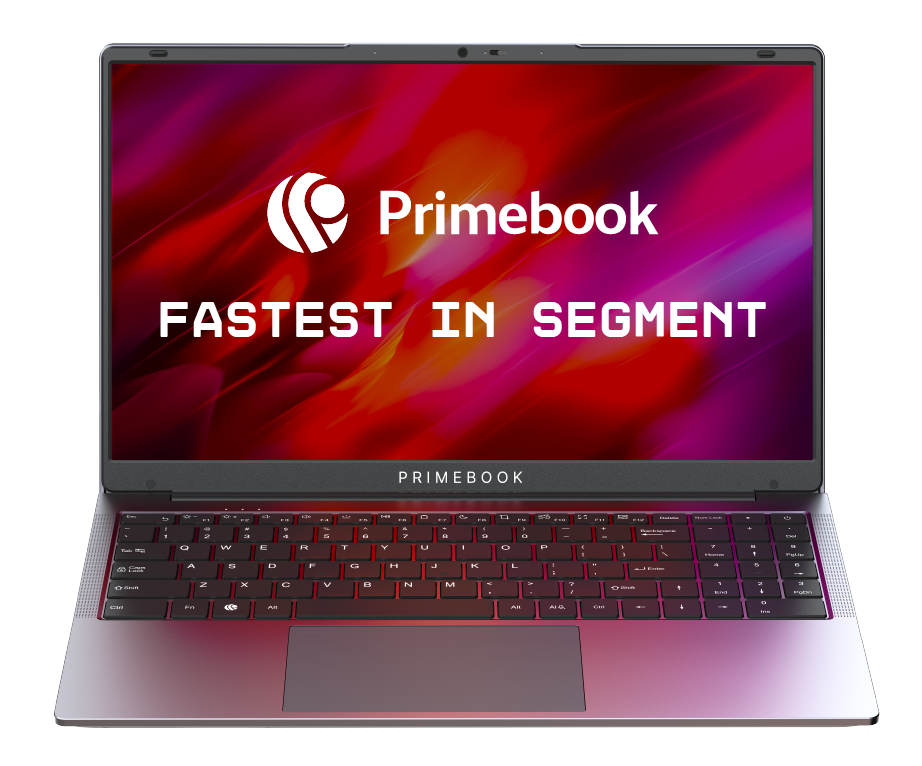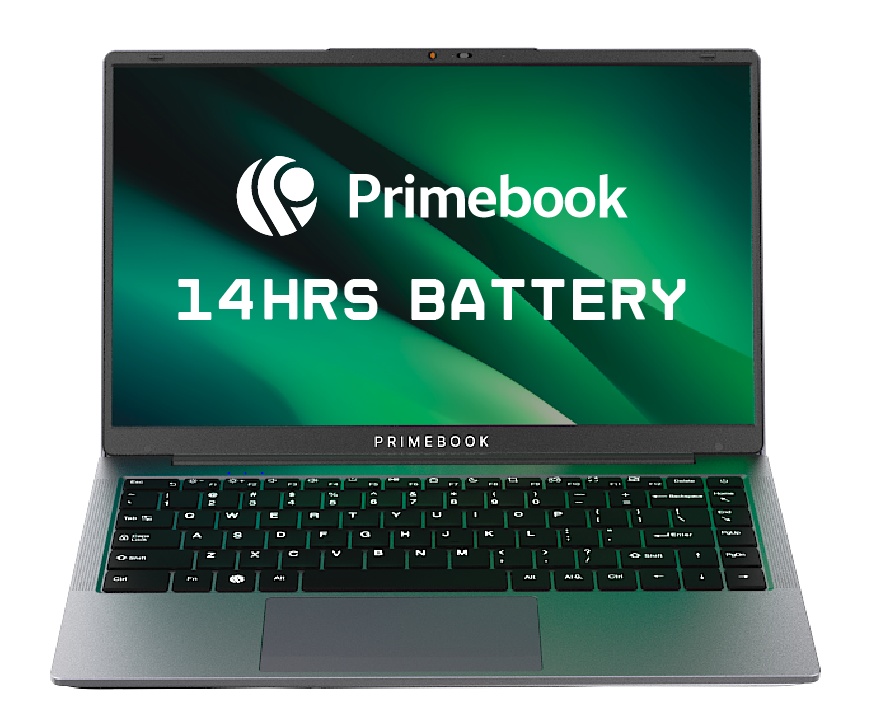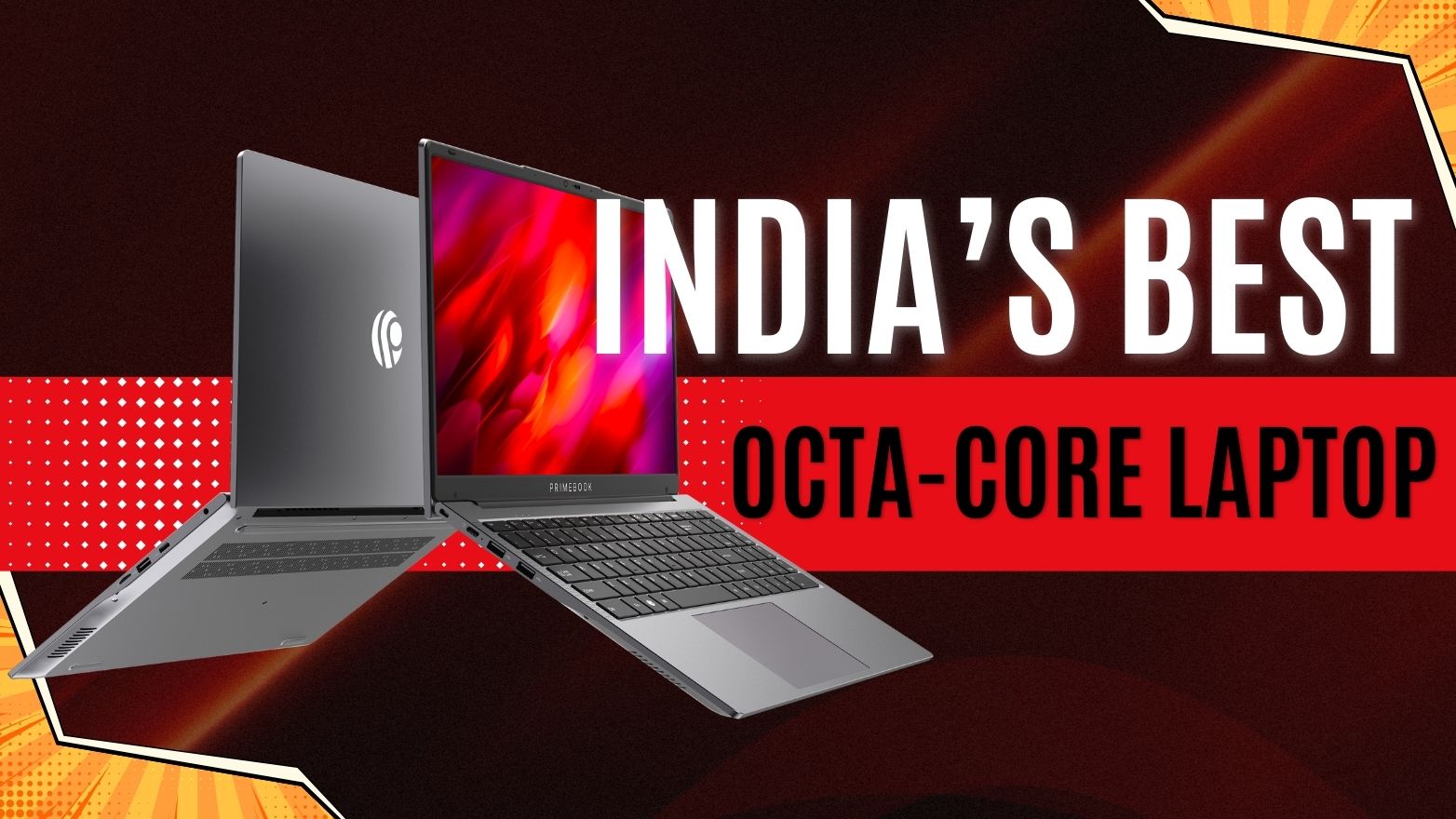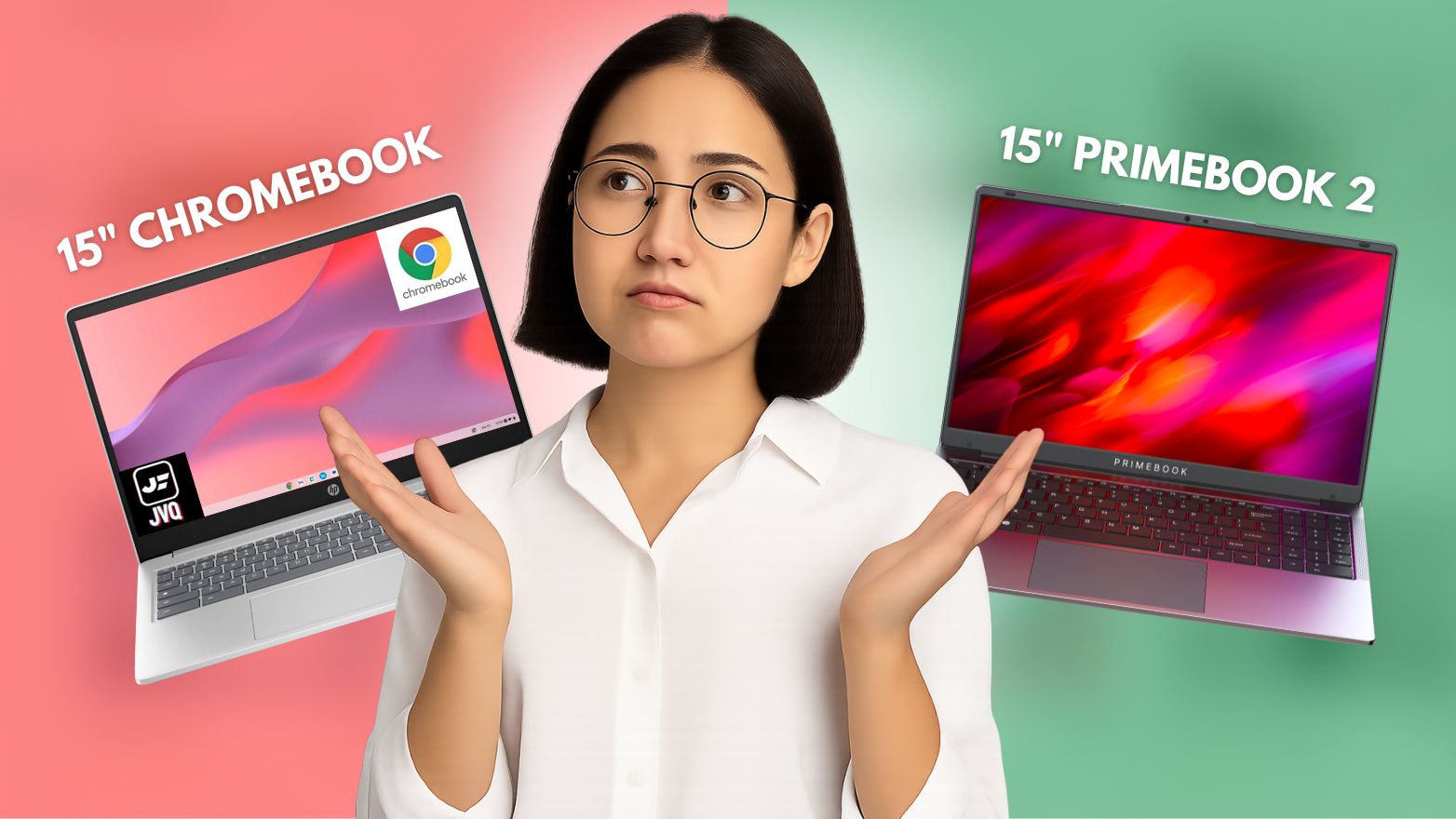Blogs / All About Primebook / 14 Inch Chromebook Vs. 14 Inch Primebook 2: Which is Better?
Blogs / All About Primebook / 14 Inch Chromebook Vs. 14 Inch Primebook 2: Which is Better?

Primebook Team
07 Nov 2025

14 Inch Chromebook Vs. 14 Inch Primebook 2: Which is Better?
In 2025, 14-inch laptops have become the go-to choice for users seeking a balance between portability and productivity. Within the under 20,000 budget segment, the latest Primebook 2 Pro laptops are standing out as a portable, high-performing 14 Inch laptop alongside Chromebooks. However, both devices take completely different approaches to get there.
This blog doesn’t just compare specifications of the two products. It compares two ways of experiencing productivity on a 14 Inch laptop.
For An Immersive Viewing & Typing Experience
When choosing a 14-inch laptop, the display quality and input experience define how comfortable daily usage feels, whether you’re watching, typing, or multitasking. Here’s how the two laptops cater to the same need for simplicity and portability, but approach design and usability differently.
|
Aspects |
14-Inch Chromebooks (Under 20K) |
14.1-Inch Primebook |
|
Display Type & Resolution |
Many Chromebooks within the same price range feature HD (1366×768) displays that are serviceable for everyday use but may feel less sharp for extended multitasking or media consumption. |
The Primebook 2 Pro features a Full HD (1920×1080) IPS display, providing clearer visuals, richer colors, and wider viewing angles for both work and entertainment. |
|
Screen Finish |
Some entry-level Chromebook models use glossy screens, which may reflect light in bright environments. |
This laptop uses a matte, anti-glare panel that reduces reflections and ensures comfortable visibility in different lighting conditions. |
|
Build Quality |
Typically plastic-built, prioritising durability and lightness over aesthetics. |
Brings a sleek matte-finish professional design that looks and feels premium while staying portable. |
|
Keyboard Experience |
Compact, non-backlit keyboard suited for light typing and classroom tasks, though not optimised for extended work sessions. |
Full-sized backlit keyboard with deeper key travel and tactile feedback, offering a comfortable experience for longer typing durations. |
|
Trackpad Precision |
Responsive for basic navigation and scrolling, though multi-touch gesture support is limited in most entry-level Chromebook models. |
Larger, smoother trackpad with multi-touch gesture support, optimised for seamless navigation within PrimeOS 3.0. |
For Smooth Performance & Multitasking
Performance is where a laptop’s true value shows up, and that ultimately depends on how well the processor, RAM, and operating system work together to manage real-world workloads. That’s where Chromebooks and the Primebook 2 Pro take significantly distinct paths.
|
Aspects |
14-Inch Chromebooks (Under 20K) |
14.1-Inch Primebook |
|
Processor |
Most budget Chromebooks run on entry-level Intel or MediaTek dual-core processors designed mainly for web-based tasks and light app usage. |
Powered by the octa-core MediaTek Helio G99 (MT8781) processor, offering laptop-grade performance with a balance of speed and energy efficiency. |
|
RAM & Storage |
Commonly configured with 4 GB LPDDR4 RAM and 32-64 GB eMMC storage, which can serve casual everyday browsing or learning tasks. |
Comes with 8 GB LPDDR4X RAM and 128 GB UFS storage, delivering faster read/write speeds and smoother multitasking across multiple apps. |
|
OS Optimisation |
ChromeOS is optimised for cloud and browser-based workflows, but it may slow down when too many tabs or Android apps are open simultaneously. |
Android 15-based PrimeOS 3.0 is built for native, app-first performance on a multi-window, multitasking, desktop-class interface, delivering a seamless balance between mobile flexibility and laptop productivity. |
|
Battery Efficiency |
Most 14-inch Chromebooks in this segment offer around 8–10 hours of battery backup, depending on workload and brightness settings. |
The Primebook 2 Pro packs a 60.3 Wh battery, delivering up to 14 hours of optimal performance, aided by the power-efficient Helio G99 processor and optimised PrimeOS resource management. |
Also Read: Windows Laptop Under 20,000 Vs. Primebook 2 Neo
For A Seamless Software Experience
The software layer defines how naturally users can adapt a device to their daily routines. While both systems of Chromebooks and Primebook 2 Pro are designed for ease of use, the real difference lies in how much freedom they give the user to shape that experience.
|
Aspects |
14-Inch Chromebooks (Under 20K) |
14.1-Inch Primebook |
|
App Ecosystem & Compatibility |
Supports web apps and select Android apps through Google Play Store, but availability varies by device, and app performance may differ across models. |
Offers access to the complete Android apps library through the Prime App Store, optimised for larger screens and laptop controls, ensuring stable and consistent performance across categories. There’s also an app-requesting feature. |
AI Integration |
Equipped with Google Assistant for basic voice commands and task automation within Google apps. |
Features an on-screen live AI assistant powered by Gemini, which uses built-in screen awareness to analyse visible content and provide contextual assistance directly on the screen. It works alongside AI-powered Global Search, allowing users to search across apps, files, and the web from one place. |
|
Extended Productivity Stack |
Focused on browser-based productivity via Google Workspace; limited integration with third-party tools. |
Comes with a pre-bundled Cloud PC feature (Prime X), which allows users to access a full-fledged Windows or Linux desktop environment virtually on the cloud server and use high-end software and tools on lightweight hardware. |
|
Input and Control |
Offers standard input through keyboard and trackpad, without additional control customisation features. |
Includes a built-in Keymapping tool that allows users to map touch gestures to keyboard keys for smoother navigation and control while using touch-intensive Android apps. |
For Better Connectivity & Everyday Usability
Ports, audio-visual quality, and connectivity options often decide how convenient a laptop feels beyond performance. Here’s how the two laptops differ when it comes to everyday practicality.
|
Aspects |
14-Inch Chromebooks (Under 20K) |
14.1-Inch Primebook |
Ports & Expandability |
Typically, 1-2 USB ports, an audio jack, and sometimes a microSD slot; availability of Type-C port support varies by model. |
Includes dual USB-A, USB-C, 3.5 mm audio jack, microSD slot (up to 1 TB), and a Kensington lock for easy peripheral and storage expansion. |
|
Wireless Connectivity |
Dual-band Wi-Fi and Bluetooth 5.0/5.1 in most models. |
Dual-band Wi-Fi and Bluetooth 5.1, plus mobile-grade sensors (GPS, gyroscope) for app-level features. |
|
Speakers & Microphones |
Standard stereo speakers and a single mic, which is adequate for video calls. |
Dual stereo speakers and dual microphones with noise cancellation for clearer voice pickup and better audio. |
|
Webcam Quality |
Commonly, 720p webcams, adequate for casual video calls. |
1440p HD webcam for sharper, clearer video in meetings and classes. |
Also Read: Laptop with Long Battery Backup
In a nutshell, the experience in Chromebooks is functional and minimalistic, designed around lightweight browsing and app use. Whereas, in the case of the Primebook 2 Pro, it offers a complete laptop experience, combining visual comfort, responsive input, and a software stack that feels purpose-built for modern productivity.


 Related Blog
Related Blog







